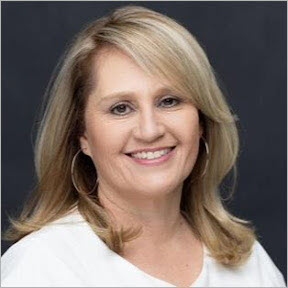Success Story: Stipends and Sign-On Bonus for SLPs and SLPAs
Leslie Salazar Armbruster, MS, CCC-SLP
Special Education Coordinator
Ysleta Independent School District in El Paso, Texas
What did you do?
Our district first instituted stipends for SLPs and SLPAs in response to a dramatic shortage of therapists. This included OT, PT, and SLP. Several years later, the stipends were increased again in response to a shortage of PTs. Shortly after that, SLPs and OTs advocated together to increase stipends to align with the PT stipend. This coincided with a new shortage of SLPs.

Leslie Salazar Armbruster, MS, CCC-SLP
In both cases, the therapists worked together to prepare a market study of salaries in the area to include hospitals and clinics in addition to neighboring school districts. A group of designated advocates from each discipline came together to present [their study findings] to the Special Education Director, who in turn opened the door for the same group to present [those same findings] to the HR Director. This prompted the district to complete its own market research—which ultimately led to the school board approving the stipends and increases.
The stipend for bilingual SLPs and SLPAs coincided with the first stipend instituted. In the course of that proposal, bilingual SLPs made the case that when evaluating a bilingual or emergent bilingual student, in many cases you have to evaluate in both languages spoken by the student; thus, it's twice the work.
The $10,000 sign-on bonus for SLPs who were new to the district coincided with the second SLP shortage referenced above. In this case, the sign-on bonus was advocated for by our Special Education Director and HR Director for support personnel after we had gone through multiple interview cycles with limited or no candidates and/or candidates turning down our job offers because the salary offered was too low. To support the decision-making process, I provided a regular analysis of trends (caseload size, referral rates, service time averages, compensatory services), costs for contract service providers, and a forecast of SLPs who were eligible for retirement. At that time, we had 11 vacancies and 17 SLPs eligible for retirement in 3 years (out of a team of 51).
What were your greatest challenges?
The greatest challenge initially was getting HR Directors to understand the nature of the therapist position and staffing—and how it differs from that of a teacher. My HR Director had difficulty wrapping his head around the licensing tiers (SLP, SLP Intern, and SLPA). They also did not understand that therapists have opportunities outside of the school system that make the market more competitive. They also had difficulty understanding caseload/workload ratios and how shortages were impacting daily service times.
Another challenge is the budget. We are a Title 1 district with declining enrollment—although our number of students receiving special education services is not declining. There are limited funds and competing interests. It was important to present requests before the start of the new budget planning cycle. In our case, we had to work closely with the Special Education Director because the stipends ultimately came from the special education budget.
Finally, keeping the sense of urgency alive within our HR department was a challenge—again, because there are competing interests within the school district and because we are competing with the private sector for candidates. With support from our Special Education Director, we worked hard to submit the trends reports, and we ask for face time frequently to keep HR updated on our progress and needs.
What was the outcome of your efforts?
Currently, our Ysleta Independent School District offers
- a $15,000 annual stipend for SLPs;
- a $9,000 annual stipend for mentoring clinical fellows; and
- a $6,000 annual stipend for SLPAs.
In addition...
- SLPs or Assistants can get an additional $1,200 stipend if they hold a bilingual certification or pass a Spanish language proficiency test (98% of our bilingual students are Spanish dominant).
- $10,000 one-time sign-on bonus for SLPs and SLPAs new to the district (this is contingent on grant funding).









